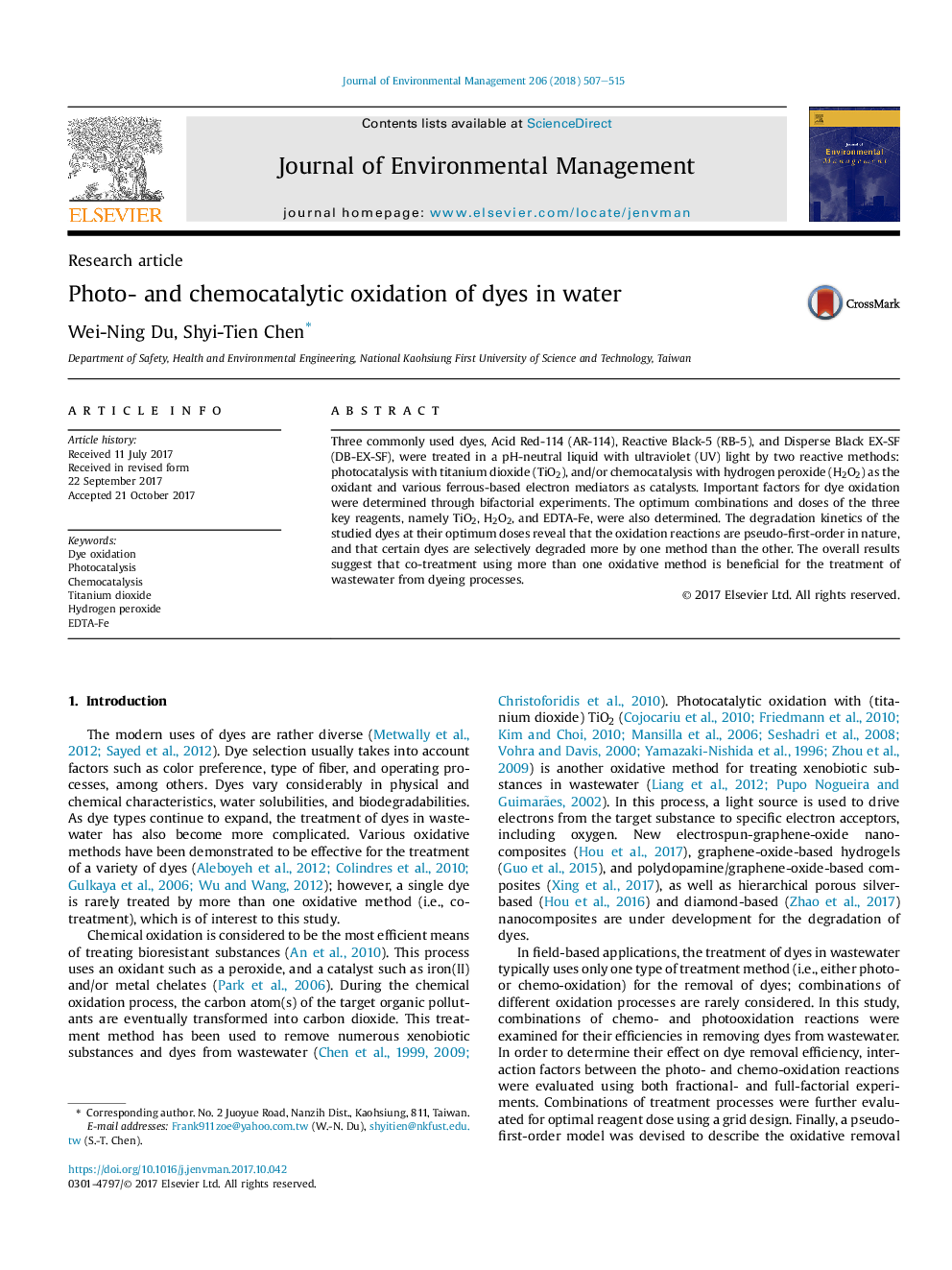| Article ID | Journal | Published Year | Pages | File Type |
|---|---|---|---|---|
| 7478788 | Journal of Environmental Management | 2018 | 9 Pages |
Abstract
Three commonly used dyes, Acid Red-114 (AR-114), Reactive Black-5 (RB-5), and Disperse Black EX-SF (DB-EX-SF), were treated in a pH-neutral liquid with ultraviolet (UV) light by two reactive methods: photocatalysis with titanium dioxide (TiO2), and/or chemocatalysis with hydrogen peroxide (H2O2) as the oxidant and various ferrous-based electron mediators as catalysts. Important factors for dye oxidation were determined through bifactorial experiments. The optimum combinations and doses of the three key reagents, namely TiO2, H2O2, and EDTA-Fe, were also determined. The degradation kinetics of the studied dyes at their optimum doses reveal that the oxidation reactions are pseudo-first-order in nature, and that certain dyes are selectively degraded more by one method than the other. The overall results suggest that co-treatment using more than one oxidative method is beneficial for the treatment of wastewater from dyeing processes.
Related Topics
Physical Sciences and Engineering
Energy
Renewable Energy, Sustainability and the Environment
Authors
Wei-Ning Du, Shyi-Tien Chen,
